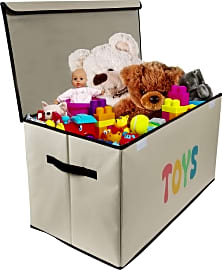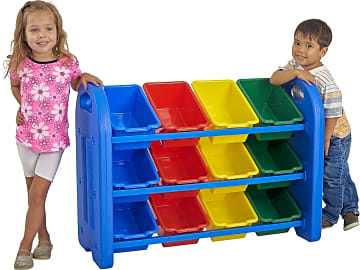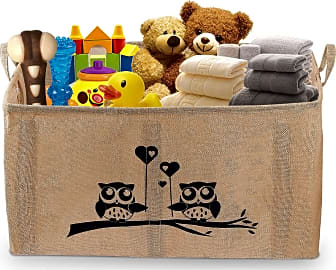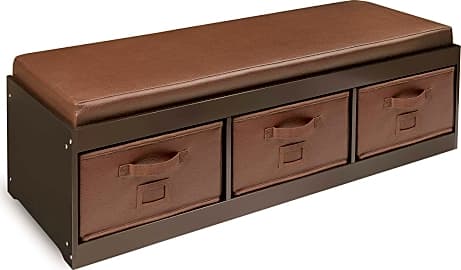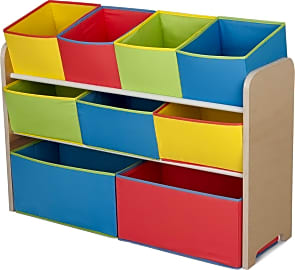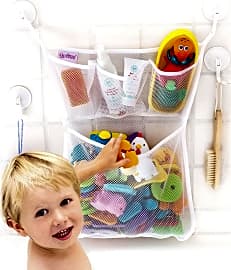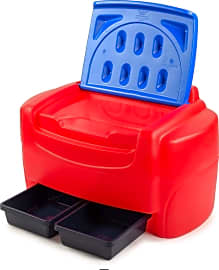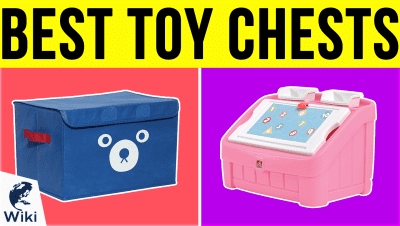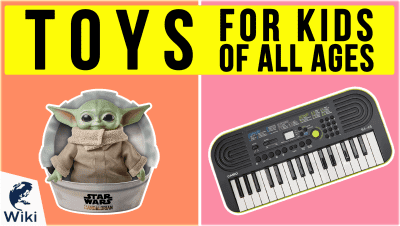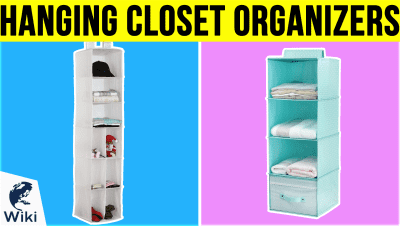The 10 Best Toy Organizers

This wiki has been updated 39 times since it was first published in August of 2015. Tired of tripping over the toys and games your kids have strewn throughout the house? With one of these organizers, you’ll make life a little easier for yourself and safer for the whole family, and maybe even regain some of your sanity. Plus, it will allow you to teach your little ones to become responsible and tidy while giving them somewhere to easily stash their stuff. When users buy our independently chosen editorial picks, we may earn commissions to help fund the Wiki.
Editor's Notes
April 10, 2020:
We eliminated the Clever Creations Farm and Fantasy Fields Safari, both of which were no longer available. The Delta Deluxe received a bump in the rankings — it’s colorful, easy to use, and an ideal size (large enough for use in a daycare center, but not too big for a child’s bedroom).
There are a few different styles to consider in this category. Shelf-style structures with multiple removable bins are popular, as are variations of the traditional toy chest design (some of which also function as a bench). The latter style can be made with fabric or canvas instead of wood — like the Gimars Playroom and new addition Woffit Flip on this list — which makes it a bit more portable and easier to store.
We added the Tub Cubby Net, a mesh organizer designed for the shower or bathtub. You can mount it directly to a tile wall using suction hooks, but it also comes with adhesive stickers if you’d prefer that method. As some adults have noted, it also happens to be the right size for holding a shower beverage. Keep in mind that it should be cleaned from time to time to prevent the accumulation of mold or mildew.
Special Honors
Nico & Yeye Toy Box This handcrafted toy chest rests atop four sturdy wheels, which proves quite useful when it’s weighed down by knickknacks, games and arts and crafts supplies. It’s customizable as well: you can choose from birch or walnut wood and 10 different paint colors. It has a protective lacquer finish, too. nicoandyeye.com
Brak Furniture Range A father-son furniture team from South Africa puts its artistry on display with this shelf-style unit, which contains slide-out drawers on the bottom, large open compartments in the middle, and closed cupboards on top. Thank to its size, this is one the kids can grow into and use into their teenage years. brak-furniture.com
Ooh Noo Chest on Wheels While it may seem unusual for youngsters to get excited over a storage accessory, don’t write off the possibility until they’ve played with this rolling toy chest. It’s essentially a wagon for their favorite playthings, with a little rope attached to the end for pulling it from room to room. ooh-noo.com
A Brief History Of Toys
These dolls were made of stone or pottery, while the ancient Greeks had some that were made of wax or terracotta.
The great thing about kids is that they'll play with anything — rocks, sticks, the box that the really expensive toy you bought them came in...
It seems like it's been this way for much of recorded history. The first known toys, belonging to civilizations that existed as early as 3010 B.C.E., included little monkeys, whistles, and miniature carts. These items were made out of whatever materials were at hand.
A few centuries later, in Egypt, these trinkets had advanced to become poseable dolls, complete with wigs and outfits. These dolls were made of stone or pottery, while the ancient Greeks had some that were made of wax or terracotta.
When girls in ancient Greece came of age, they were expected to burn all of their toys in sacrifice to the gods — you know, like you threaten to do every time you step on a Lego. Boys, on the other hand, played with bows and arrows and primitive yo-yos, in order to prepare them for war and, um...yo-yoing.
Once the Enlightenment rolled around, kids began to be viewed as people in their own right. As a result, an emphasis was placed on helping them enjoy their childhood, and toys began to be widely manufactured starting in the late 18th century C.E.
Many of these toys also had secondary, often educational, purposes. For example, jigsaw puzzles were invented in 1767 to teach kids geography, while rocking horses were intended to teach wealthy children how to ride real horses.
Around the turn of the 20th century, however, toys really began to come into their own. The ability to mass produce simple toys made them available to a wider section of the population, and the rise of wages in the West made them affordable. Also, the curbing of child labor gave kids more free time that they needed to fill.
These toys were made of everything from die-cast metal to the newly-invented plasticine. After WWII, however, the use of plastics revolutionized the industry. Toys were cheap and commonplace, and such iconic toys as Barbie and Legos came along at this time.
Today, many of those classic toys are still popular — as are much more advanced models that can do everything from recognize phrases to communicate with their owners. Still, one thing remains constant: the best way to find a lost toy is to walk around barefoot.
How To Convince Kids To Keep Their Toys Organized
Getting your kids to pick up their toys when they're done playing with them often feels like more work than just picking them up yourself. However, there are a few strategies you can use to encourage your little ones to clean up after themselves.
First off, be clear and consistent with what you expect — and what the consequences for not following the rules will be. If you've tried this in the past and haven't followed through, explain to them that these are new rules, and then stick to them.
If the mess is truly massive and you know your toddler's attention span won't last long enough to finish the task without a fight, then just do a little bit at a time.
Once the rules have been established, it's time to make things fun. Pitch in at first, and make a show of how much fun you're having — make it a game, if possible. Go full Mary Poppins. Sing a song, make it a contest, whatever gets your kid involved and engaged. Don't treat it as a chore, and they'll be less likely to see it as one.
Go heavy on the positive reinforcement, as well. Sticker charts are a good way to track and reward their performance, or you can allow them to do a preferred activity after the task is completed.
Also, don't push things too far. If the mess is truly massive and you know your toddler's attention span won't last long enough to finish the task without a fight, then just do a little bit at a time. Break the huge job down into little bite-sized pieces.
One last thing: it will be harder to keep everything organized if you have too many toys. Periodically weed out the toys that your child doesn't play with anymore, and give them away to less fortunate kids.
If you're consistent and unchanging with your expectations, your child will soon come to see cleaning up as just another part of life. However, if you're wishy-washy, expect to have many fights — and a messy home — in your future.
Other Ways To Keep Your Home Organized
The single best way to get a messy home under control is to purge as many non-essential items as possible. If you don't currently use it and it doesn't have tremendous sentimental value, jettison it. The less stuff you have, the less stuff that can get in your way.
If the initial act of cleaning and decluttering feels massive, take it a little bit at a time.
Next, borrow an idea from your kids' room and get an organizer or two for yourself. Make sure that everything has a place to live when it's not in use, and get in the habit of keeping it there.
If the initial act of cleaning and decluttering feels massive, take it a little bit at a time. Do 20 minutes or so a day (and don't let any new messes pile up). Once your home is squared away, use the idea of "mise en place to keep it that way. Simply put, that means to clean things as you go, before they can snowball into gigantic messes.
Take a preset time every day to do a little bit of cleaning. For example, right before bed you could do a quick little clean-up — simply go through the house and put things away. It shouldn't take longer than 10 or 15 minutes.
Once you have the strategies in place to keep your home clean, you'll find that it's surprisingly easy to maintain — and never having to apologize to visitors for the condition of your living space is an indescribably good feeling.


